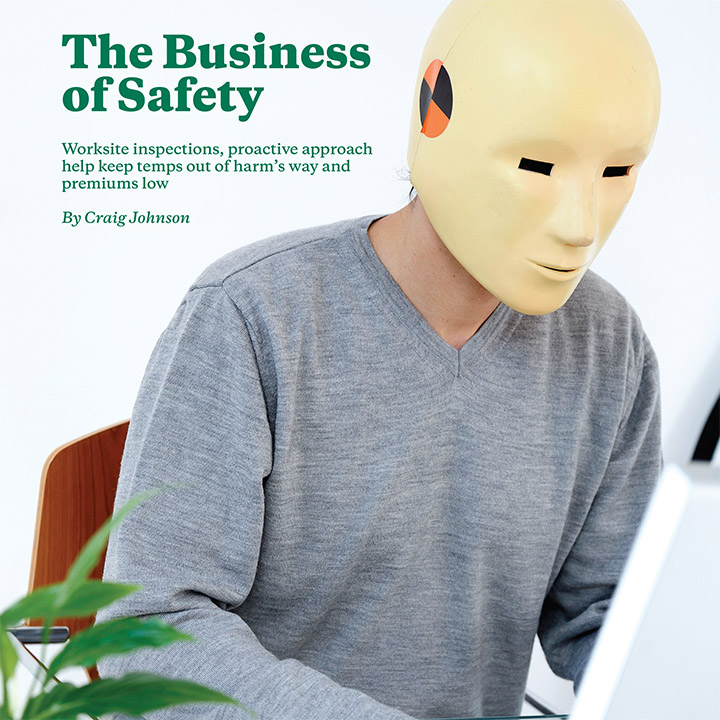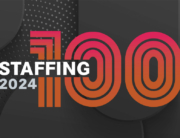Over the years, temp worker accidents have been publicized with staffing firms and clients sometimes being castigated for violations at the client site. Some believe that temporary workers may be more likely to suffer injuries than directly hired workers. And some industry insiders argue that in many cases, it is the buyers of staffing services that create unsafe conditions. Perception aside, subsequent dialogue has focused on safety being a shared responsibility. Today, keeping temporary workers safe and paying attention to their well-being are top-of-mind issues for staffing firms.
It was also a major concern for the Occupational Safety and Health Administration, which launched an initiative to raise awareness of temporary workers’ safety four years ago. The initiative helped facilitate conversations about safety between staffing companies and client firms. At the time of this writing, it was unclear where that initiative is headed with the new US administration. An OSHA spokeswoman reported the department did not have leadership in place and was not working on any initiatives.
Political climate notwithstanding, safety remains a significant concern. Companies with high instances of injures pay for it with elevated workers’ compensation rates. Although some believe the workers’ comp market is softening, it can still be a difficult market. It’s not just about money, however. More and more firms are committed to keeping workers safe.
Shared Responsibility With Client
And making sure temporary workers stay safe includes getting on the same page with the client company over who handles what training and provides protective equipment as well as conducting worksite inspections, among other things.
“From a staffing company perspective, it’s really important to know what the working environment is and do a workplace evaluation,” says John Morrison, senior VP and legal counsel at Elwood Staffing. Staffing firms need to make sure they aren’t sending their workers into a dangerous site, and if there are hazards, that workers are appropriately trained for them.
In terms of training, temporary workers must also be treated equally as the client company’s directly hire workers. “Just from the employee side of it, the temporary employees should get the same training and everything the client employees get from a safety perspective,” Morrison says.
Staffing firms and client companies also need to make sure they discuss who will be performing what part of the needed training for workers — and the two should establish procedures for what do in case an injury does happen.
Staffing firms also need to be proactive in creating safety awareness, says Jeff Nugent, founder and managing director of Contingent Workforce Solutions. In addition, in the event an accident does occur, agencies and client companies must have well-defined protocols for incident response, what information is provided to whom and what the policy is for the workers to return to work or to be rehabilitated.
And the staffing firm and client company must be in alignment on these issues.
From an overall liability perspective, “in some cases it’s smarter to walk away from business than to do business with a client who does not take safety seriously and could endanger one of the workers you send to them,” Nugent says.
Jason Lannie, VP of risk management for People 2.0, says firms should look at the “who, what and where” when assessing risk. The “who” means they should know the employees’ backgrounds and qualifications as well as be selective in the client screening process. The “what” touches on whether the job being filled is a fit with the staffing company’s risk tolerance. The “where” is understanding the client worksite. Staffing firms should understand the safety of sites where employees are being placed and conduct periodic reviews to make sure the worksites remain safe. Worksites can change and workers can also be assigned different tasks than originally identified. It’s important to work in partnership with clients. Workers also should be encouraged to alert the staffing firm to any task or workplace changes that may be of concern.
“Safety really needs to be a shared responsibility by everyone,” Lannie says.
Where are the highest workers’ comp rates?
California had the highest workers’ comp rates among all states with a premium rate index of $3.24 per $100 of payroll, according to a report released last October by the Oregon Department of Consumer and Business Services. The national median was $1.84 per $100 of payroll. New Jersey ranked second at $2.92.
States’ rates vary due to several factors — mainly the cost of doing business. Rating bureaus look at statistical studies on medical costs, wage payouts for injured workers and disability and then provide data to carriers so they can develop their rates, according to Kevin Kilcoyne, director of staffing insurance at the Barrow Group LLC, an insurance brokerage specializing in the temporary staffing industry.
“We see some states, such as Illinois and California, where the workers’ compensation system is extremely challenging,” Kilcoyne says. “That tends to garner more litigated cases and higher claim cost outcomes than we see in other states, which then has the potential to drive rates up with carriers.”
The Oregon Department of Consumer and Business Services regulates workplace safety among its other responsibilities. It has conducted studies of workers’ comp rates nationwide in even-numbered years since 1986, when Oregon’s rates were among the highest in the nation. In 2016, Oregon had the seventh-least expensive rates among states with a premium rate index of $1.28 per $100 of payroll.
The state with the lowest was North Dakota at 89 cents.
Oregon based the indexes on 50 classification codes based on relative importance as measured by share of losses in Oregon and rates were weighted by 2010-2012 Oregon payroll in order to control for differences in industry distribution.
Watch Those Rates
The business reality cannot be ignored: Safety plays a factor with workers’ comp insurance rates. Staffing firms with good safety records lower premiums than those with poor safety history. Lannie says the workers’ comp market appears to be improving, and it’s not as hard as a few years back. Still, that’s not across the board as certain states pose challenges.
There are new workers’ comp insurance programs coming into the market, and that can be an indication that the market is getting softer, says Kevin Kilcoyne, director of staffing insurance at the Barrow Group LLC, an insurance brokerage specializing in the temporary staffing industry. However, insurers are still being very careful in the accounts they underwrite. Skilled program underwriters are looking for staffing firms that are considered best-in-class as it relates to employee hiring processes, client-selection methods, as well as their safety and injury management programs, including a strong Return to Work program.
“I do think if you have a company that is performing well, it will be rewarded,” Kilcoyne says. On the flip side, those that don’t will be penalized.
Workers’ comp premiums are based, in part, on experience rating, he says. And that’s the portion of workers’ comp premiums that staffing firms can control. As an example, firms that perform 20% worse than average would have an experience rating of 1.20, and begin with a 20% penalty on premiums. Staffing firms should look to specialists in the industry to help them work toward minimizing their experience rating. There are, however, other aspects beyond their control — for example, workers’ compensation premiums in Florida increased 14.5% late last year because of legal rulings.
Contingent Workforce Solutions’ Nugent says as a for-profit business, private workers’ comp insurance providers are looking to sell workers’ comp at the highest premiums they can and insure the staffing firms with the lowest probability for having to pay out claims. Still, companies with poor track records for safety will face higher premiums than do safe firms.
“In general, if you are a good, proactive staffing provider with a good health and safety track record, you should get the best premium costs from your insurers,” he says.
The bottom line is safety is as important as ever.







